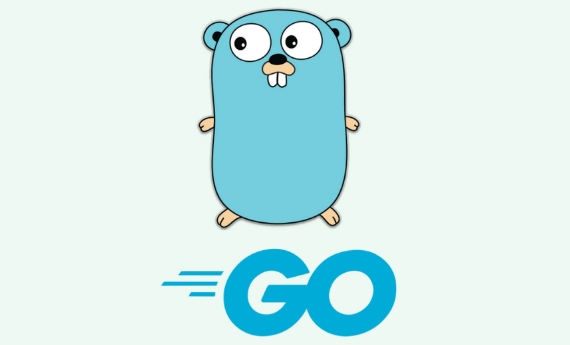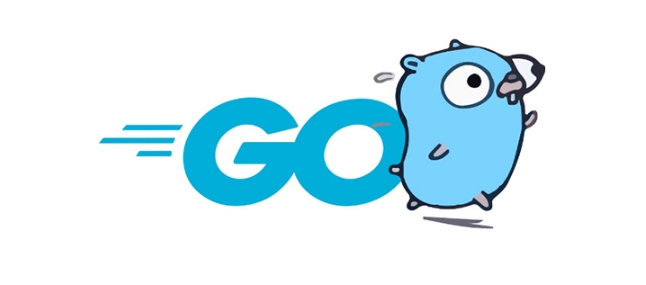Embedding files directly into binaries eliminates external dependencies, making the binary self-contained and reducing production errors. 2. Deployment is simplified by distributing only a single binary, benefiting Docker images, CLI tools, and microservices by removing path and file setup concerns. 3. Security and integrity improve as embedded files are harder to tamper with and immune to accidental overwrites. 4. Build-time control allows different assets to be embedded based on build tags, enabling environment-specific configurations without code changes. 5. The embed.FS type implements io/fs.FS, enabling seamless integration with standard library functions like fs.ReadFile and http.FileServer for serving web assets, making embed a powerful tool for creating portable, reliable Go applications in modern environments.

Using Go’s embed package (introduced in Go 1.16) brings several practical benefits, especially when building standalone binaries or simplifying deployment. Here’s why it’s useful:

1. Embed Static Files Directly into Binaries
The embed directive allows you to include files like HTML templates, JSON configs, CSS, JS, or images directly into your compiled Go binary. This means:
- No need to manage external file dependencies.
- The binary becomes completely self-contained.
- Reduces the risk of missing files in production.
For example:

//go:embed templates/* var templateFiles embed.FS //go:embed version.txt var version string
Now version.txt is part of the binary — no separate file needed at runtime.
2. Simplifies Deployment
When you embed assets, you deploy just one binary. This is great for:

- Docker images (smaller, cleaner layers)
- CLI tools (users don’t need config folders)
- Microservices (no shared storage or file setup)
No more worrying about relative paths, working directories, or ensuring config/assets are copied correctly.
3. Improves Security and Integrity
Since files are baked into the binary:
- Harder for attackers to tamper with templates or config files.
- Avoids accidental overwrites or misconfigurations in production.
- You control exactly what version of a file is included at build time.
4. Better Build-Time Control
You can use different embedded assets based on build tags or environment-specific builds.
Example:
//go:embed assets/prod/* // build production //go:embed assets/dev/* // build development
This lets you embed different assets without changing code or deployment scripts.
5. Works Seamlessly with fs.FS
The embed.FS type implements the io/fs.FS interface, so you can use standard library functions like fs.ReadFile, fs.Glob, or integrate with http.FileServer:
// Serve embedded static files over HTTP
http.Handle("/", http.FileServer(http.FS(assets)))This makes it easy to build web apps where frontend assets are embedded.
Common Use Cases
- Web servers with embedded HTML/CSS/JS
- CLI tools with built-in templates or help text
- Configuration files baked into binaries
- Version/build info (e.g., embed git hash or version number)
Basically, embed makes Go binaries more portable, reliable, and easier to manage — especially in modern deployment environments like containers or serverless. It’s not always needed, but when you need it, it’s a game-changer.
The above is the detailed content of What are the benefits of using go embed?. For more information, please follow other related articles on the PHP Chinese website!

Hot AI Tools

Undress AI Tool
Undress images for free

Undresser.AI Undress
AI-powered app for creating realistic nude photos

AI Clothes Remover
Online AI tool for removing clothes from photos.

Clothoff.io
AI clothes remover

Video Face Swap
Swap faces in any video effortlessly with our completely free AI face swap tool!

Hot Article

Hot Tools

Notepad++7.3.1
Easy-to-use and free code editor

SublimeText3 Chinese version
Chinese version, very easy to use

Zend Studio 13.0.1
Powerful PHP integrated development environment

Dreamweaver CS6
Visual web development tools

SublimeText3 Mac version
God-level code editing software (SublimeText3)

Hot Topics
 Understanding the Performance Differences Between Golang and Python for Web APIs
Jul 03, 2025 am 02:40 AM
Understanding the Performance Differences Between Golang and Python for Web APIs
Jul 03, 2025 am 02:40 AM
Golangofferssuperiorperformance,nativeconcurrencyviagoroutines,andefficientresourceusage,makingitidealforhigh-traffic,low-latencyAPIs;2.Python,whileslowerduetointerpretationandtheGIL,provideseasierdevelopment,arichecosystem,andisbettersuitedforI/O-bo
 Is golang frontend or backend
Jul 08, 2025 am 01:44 AM
Is golang frontend or backend
Jul 08, 2025 am 01:44 AM
Golang is mainly used for back-end development, but it can also play an indirect role in the front-end field. Its design goals focus on high-performance, concurrent processing and system-level programming, and are suitable for building back-end applications such as API servers, microservices, distributed systems, database operations and CLI tools. Although Golang is not the mainstream language for web front-end, it can be compiled into JavaScript through GopherJS, run on WebAssembly through TinyGo, or generate HTML pages with a template engine to participate in front-end development. However, modern front-end development still needs to rely on JavaScript/TypeScript and its ecosystem. Therefore, Golang is more suitable for the technology stack selection with high-performance backend as the core.
 How to build a GraphQL API in golang
Jul 08, 2025 am 01:03 AM
How to build a GraphQL API in golang
Jul 08, 2025 am 01:03 AM
To build a GraphQLAPI in Go, it is recommended to use the gqlgen library to improve development efficiency. 1. First select the appropriate library, such as gqlgen, which supports automatic code generation based on schema; 2. Then define GraphQLschema, describe the API structure and query portal, such as defining Post types and query methods; 3. Then initialize the project and generate basic code to implement business logic in resolver; 4. Finally, connect GraphQLhandler to HTTPserver and test the API through the built-in Playground. Notes include field naming specifications, error handling, performance optimization and security settings to ensure project maintenance
 How to install Go
Jul 09, 2025 am 02:37 AM
How to install Go
Jul 09, 2025 am 02:37 AM
The key to installing Go is to select the correct version, configure environment variables, and verify the installation. 1. Go to the official website to download the installation package of the corresponding system. Windows uses .msi files, macOS uses .pkg files, Linux uses .tar.gz files and unzip them to /usr/local directory; 2. Configure environment variables, edit ~/.bashrc or ~/.zshrc in Linux/macOS to add PATH and GOPATH, and Windows set PATH to Go in the system properties; 3. Use the government command to verify the installation, and run the test program hello.go to confirm that the compilation and execution are normal. PATH settings and loops throughout the process
 Resource Consumption (CPU/Memory) Benchmarks for Typical Golang vs Python Web Services
Jul 03, 2025 am 02:38 AM
Resource Consumption (CPU/Memory) Benchmarks for Typical Golang vs Python Web Services
Jul 03, 2025 am 02:38 AM
Golang usually consumes less CPU and memory than Python when building web services. 1. Golang's goroutine model is efficient in scheduling, has strong concurrent request processing capabilities, and has lower CPU usage; 2. Go is compiled into native code, does not rely on virtual machines during runtime, and has smaller memory usage; 3. Python has greater CPU and memory overhead in concurrent scenarios due to GIL and interpretation execution mechanism; 4. Although Python has high development efficiency and rich ecosystem, it consumes a high resource, which is suitable for scenarios with low concurrency requirements.
 Go sync.WaitGroup example
Jul 09, 2025 am 01:48 AM
Go sync.WaitGroup example
Jul 09, 2025 am 01:48 AM
sync.WaitGroup is used to wait for a group of goroutines to complete the task. Its core is to work together through three methods: Add, Done, and Wait. 1.Add(n) Set the number of goroutines to wait; 2.Done() is called at the end of each goroutine, and the count is reduced by one; 3.Wait() blocks the main coroutine until all tasks are completed. When using it, please note: Add should be called outside the goroutine, avoid duplicate Wait, and be sure to ensure that Don is called. It is recommended to use it with defer. It is common in concurrent crawling of web pages, batch data processing and other scenarios, and can effectively control the concurrency process.
 Go embed package tutorial
Jul 09, 2025 am 02:46 AM
Go embed package tutorial
Jul 09, 2025 am 02:46 AM
Using Go's embed package can easily embed static resources into binary, suitable for web services to package HTML, CSS, pictures and other files. 1. Declare the embedded resource to add //go:embed comment before the variable, such as embedding a single file hello.txt; 2. It can be embedded in the entire directory such as static/*, and realize multi-file packaging through embed.FS; 3. It is recommended to switch the disk loading mode through buildtag or environment variables to improve efficiency; 4. Pay attention to path accuracy, file size limitations and read-only characteristics of embedded resources. Rational use of embed can simplify deployment and optimize project structure.
 Evaluating Code Readability and Maintainability: Golang vs Python Perspectives
Jul 03, 2025 am 02:40 AM
Evaluating Code Readability and Maintainability: Golang vs Python Perspectives
Jul 03, 2025 am 02:40 AM
WhenchoosingbetweenGolangandPythonforcodereadabilityandmaintainability,thedecisionhingesonteampriorities.1.Golangoffersstrictconsistencywithminimal,opinionatedsyntaxandbuilt-intoolinglikegofmt,ensuringuniformcodestyleandearlyerrordetection.2.Pythonpr






